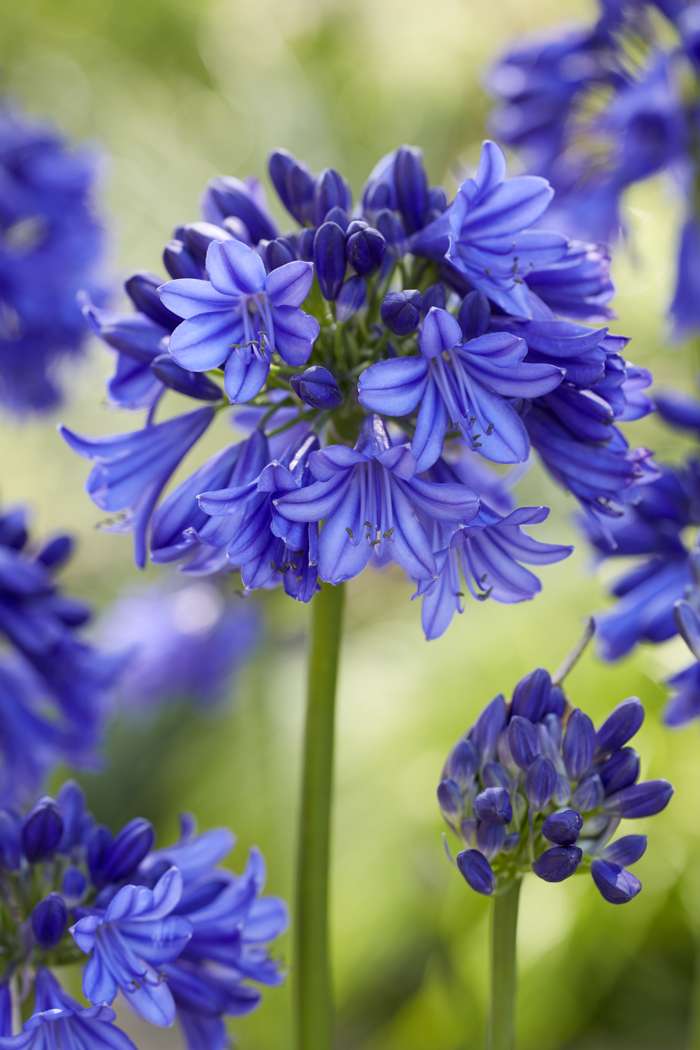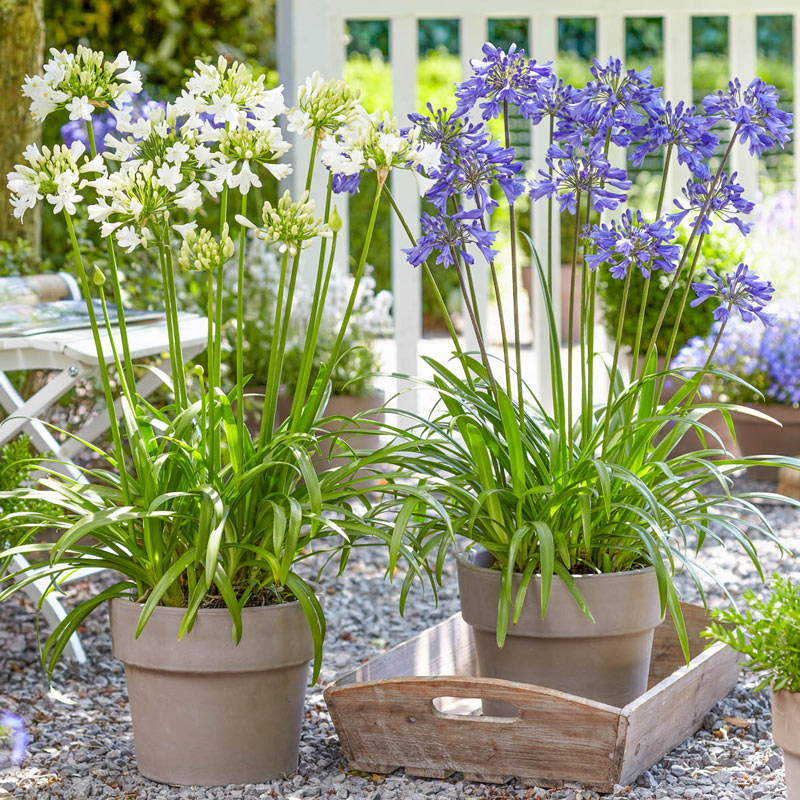Spectacular Agapanthus: Enhancing Your Garden's Charm
Spectacular Agapanthus: Enhancing Your Garden's Charm
Blog Article
Letting Loose the Secret to Effective Agapanthus Farming: Advice for a Flourishing Garden
In the world of horticulture, growing agapanthus effectively calls for a critical technique that includes numerous aspects of plant treatment. With mindful attention to information, one can open the secrets to nurturing these magnificent blooms, causing a garden that thrives with beauty and vibrancy. By recognizing the subtleties of agapanthus growing, one can create a setting where these plants thrive and grow perfectly. In the following conversation, we will check out vital suggestions and tricks that will lead you in the direction of a prospering agapanthus yard, providing insights right into best techniques, soil problems, watering strategies, and a lot more.
Planting Agapanthus: Ideal Practices
When planting Agapanthus, appropriate soil preparation is essential for making certain successful growth and growth of these stunning blossoms. Agapanthus, typically referred to as Lily of the Nile or African lily, grows in well-draining soil with a somewhat acidic to neutral pH degree - Agapanthus. Prior to planting, it is crucial to change heavy clay soils with natural matter such as garden compost or peat moss to enhance drainage and supply vital nutrients for the plants
To grow Agapanthus, choose a place that obtains full sunshine to partial shade, as this will advertise healthy development and abundant blooming. Dig a hole two times the diameter of the plant's origin ball and put the Agapanthus at the same deepness it was previously growing. Delicately backfill the hole with soil, pushing down firmly to eliminate any air pockets around the roots.
Water the freshly grown Agapanthus thoroughly and remain to maintain the soil uniformly wet, especially throughout the plant's energetic expanding season. Agapanthus. Applying a well balanced plant food once a month can further sustain the plant's growth and blooming. By following these finest techniques for growing Agapanthus, you can create a sensational display screen of these captivating flowers in your yard
Perfect Dirt Conditions for Agapanthus
For optimal development and blooming success of Agapanthus plants, guaranteeing the soil problems are ideal is essential. Agapanthus prefers dirt that is rich in nutrients, so including a well balanced plant food during the expanding period can advertise healthy and balanced development and lively flowers.

Watering and Feeding Tips
To guarantee healthy growth and dynamic blooms, proper watering and feeding strategies are crucial for effective Agapanthus farming. Agapanthus plants profit from routine watering, particularly during the growing period.
When it involves feeding Agapanthus, a well balanced plant food with equal parts nitrogen, phosphorus, and potassium can be used in the spring to advertise healthy and balanced growth and flowering. Slow-release plant foods are perfect for offering nutrients gradually over an extensive duration. Prevent over-fertilizing, as this can lead to too much foliage growth at the cost of blooms.
Furthermore, including organic issue like garden compost right into the soil can boost nutrient degrees and improve dirt structure, aiding in the total health and wellness of the Agapanthus plants. By following these watering and fertilizing tips, gardeners can ensure their Agapanthus plants prosper and produce magnificent display screens of flowers.
Trimming and Deadheading Methods
Appropriate pruning and deadheading strategies play a vital role in keeping the health and aesthetic appeals of Agapanthus plants, complementing the crucial methods of watering and fertilizing for effective growing. Trimming Agapanthus involves getting rid of spent blossom heads, yellowing or dead leaves, and general shaping of the plant to advertise better growth. Deadheading, the procedure of getting rid of faded blossoms, not only boosts the plant's appearance yet also motivates more blooming.
When deadheading Agapanthus, it is a good idea to trim off the flower stem at the base making use of sharp, tidy shears. This procedure reroutes the plant's power from seed production back into origin and foliage growth, advertising a much healthier and much more robust plant. Normal deadheading can extend the flowering period of Agapanthus and protect against self-seeding, which can result in congestion.
In regards to trimming, Agapanthus usually take advantage of a light trim after flowering to clean up the Recommended Reading plant and encourage fresh development. Cutting back the invested blossom stems and getting rid of any kind of damaged or dead foliage assists preserve the plant's vitality and total look. Nonetheless, it is vital to prevent reducing right into the crown of the plant, as this can deteriorate its health and wellness.

Protecting Agapanthus From Vermins and Diseases
Carrying out efficient insect and disease management approaches is critical to securing the health and wellness and vitality of Agapanthus plants in cultivation. Agapanthus are usually durable plants, however they can still come down with different insects and illness if not properly looked after. One typical insect that influences Agapanthus is the Agapanthus borer, a caterpillar that passages right into the plant, causing damages to the blossoms and leaves. To stop problems, routine inspection of the plants is necessary. If borers are found, they can be manually removed, or insecticidal soap can be used as a control action.
Along with parasites, Agapanthus are vulnerable to conditions such as root rot and fungal fallen leave places. These issues can commonly be avoided by making sure proper drain and staying clear of overwatering. If indications of illness show up, like this affected parts of the plant must be promptly eliminated to stop further spread. Fungicides may likewise be utilized as a therapy measure, complying with the maker's guidelines carefully. By staying alert and resolving parasite and disease issues quickly, gardeners can help their Agapanthus prosper and thrive.

Final Thought
To conclude, effective cultivation of agapanthus calls for proper growing techniques, optimal soil conditions, additional hints ample watering and fertilizing, routine trimming and deadheading, and protection from parasites and diseases. By complying with these techniques and tips, garden enthusiasts can ensure a growing yard full of lovely agapanthus flowers. Agapanthus. Bear in mind to maintain constant treatment and focus to detail to promote the health and wellness and durability of these magnificent plants
When planting Agapanthus, correct soil prep work is essential for making sure effective growth and development of these stunning flowers.Water the recently grown Agapanthus extensively and proceed to maintain the dirt equally moist, especially during the plant's active expanding season.For ideal growth and flowering success of Agapanthus plants, making certain the dirt problems are perfect is vital. When growing or transplanting Agapanthus, make certain the dirt is well-prepared to give the required foundation for the plants to establish themselves effectively. One typical pest that impacts Agapanthus is the Agapanthus borer, a caterpillar that tunnels right into the plant, creating damage to the fallen leaves and flowers.
Report this page